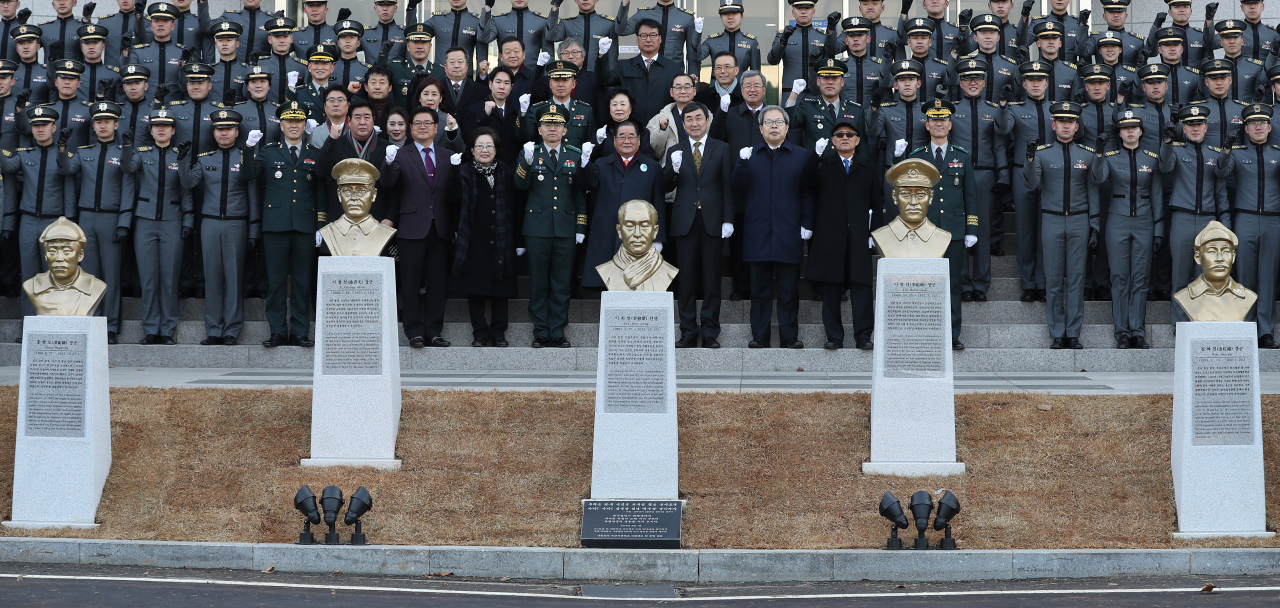Military to relocate independence hero’s statue amid controversy
By Ji Da-gyumPublished : Aug. 31, 2023 - 18:17

The Korea Military Academy on Thursday announced it would relocate the statue of Gen. Hong Beom-do, a prominent figure in Korea's independence history, amid the intense ideological debate stirred by the plan.
The debate centers on whether Gen. Hong joining the then Vladmir Lenin-led Soviet Communist Party in 1927 is a legitimate enough reason to remove it from the institution in Nowon-gu, Seoul, even in light of his notable role as an independent fighter throughout the Japanese Occupation of Korea from 1910 to 1945.
"The bust of Gen. Hong Beom-do will be moved to an appropriate location that can effectively highlight his contributions to the independence movement," the military academy said in a written announcement, without providing a precise timeline.
The military academy underscored that it would choose the place by "taking into account both the identity of the Korea Military Academy and the need to honor his role as a fighter for independence."
The Yoon Suk Yeol administration has been contemplating the relocation of Hong's sculpture to the Independence Hall of Korea in South Chungcheong Province. However, the venue has yet to be confirmed at this time, military officials told The Korea Herald.
The busts of four other independence fighters, including Gen. Kim Jwa-jin -- which are currently situated alongside Hong's -- will remain on campus, but to different locations.
The Korea Military Academy has reviewed the plan to relocate statues of five independence fighters since last November, as part of its comprehensive development plan.
The five busts were established at the campus in 2018 under the previous liberal-leaning Moon Jae-in government under the rationale that the origins of the South Korean Army can be traced back to the Liberation Army and independence fighters. But the training institute has reevaluated whether these statues are in line with their values and if the plan had gone through a thorough process of public consultation.
South Korea's Defense Ministry on Monday said Hong's affiliation with the Soviet Communist Party and his activities stand in contradiction to the "tradition and identity" of the academy, which trains cadets to become commissioned officers for armed forces.
Historians have pointed out that the Defense Ministry's assertion disregards the nuances of historical contexts, particularly the unique circumstances in which Korean independence fighters were compelled to seek support from communist nations to sustain their resistance against Japanese colonial rule.
Hong served as the general commander in Korea's Independence Army, rendering him a significant figure in Korea's fight for freedom. He holds a special place in history for his prominent role in the Battle of Fengwudong, also known as Bong-o-dong in Korean, which served a blow to Japanese forces in northeastern China in 1920.
In addition, Hong's membership in the communist party in 1927 was under Lenin's leadership, which distinguishes it from the period when Joseph Stalin was in charge. Stalin's leadership is associated with the communist party that influenced the late North Korean leader Kim Il-sung to initiate the invasion of South Korea in 1950.
Given the timing of his passing in 1943, there's no proof indicating his resistance to the formation of the Republic of Korea's government in 1948 or engagement in actions endorsing North Korea's ruling Workers' Party of Korea, established in 1945.
The Defense Ministry has also been assessing the viability of moving another statue of Hong, which was erected on the ministry's compound in 1998, despite the growing controversy.




















